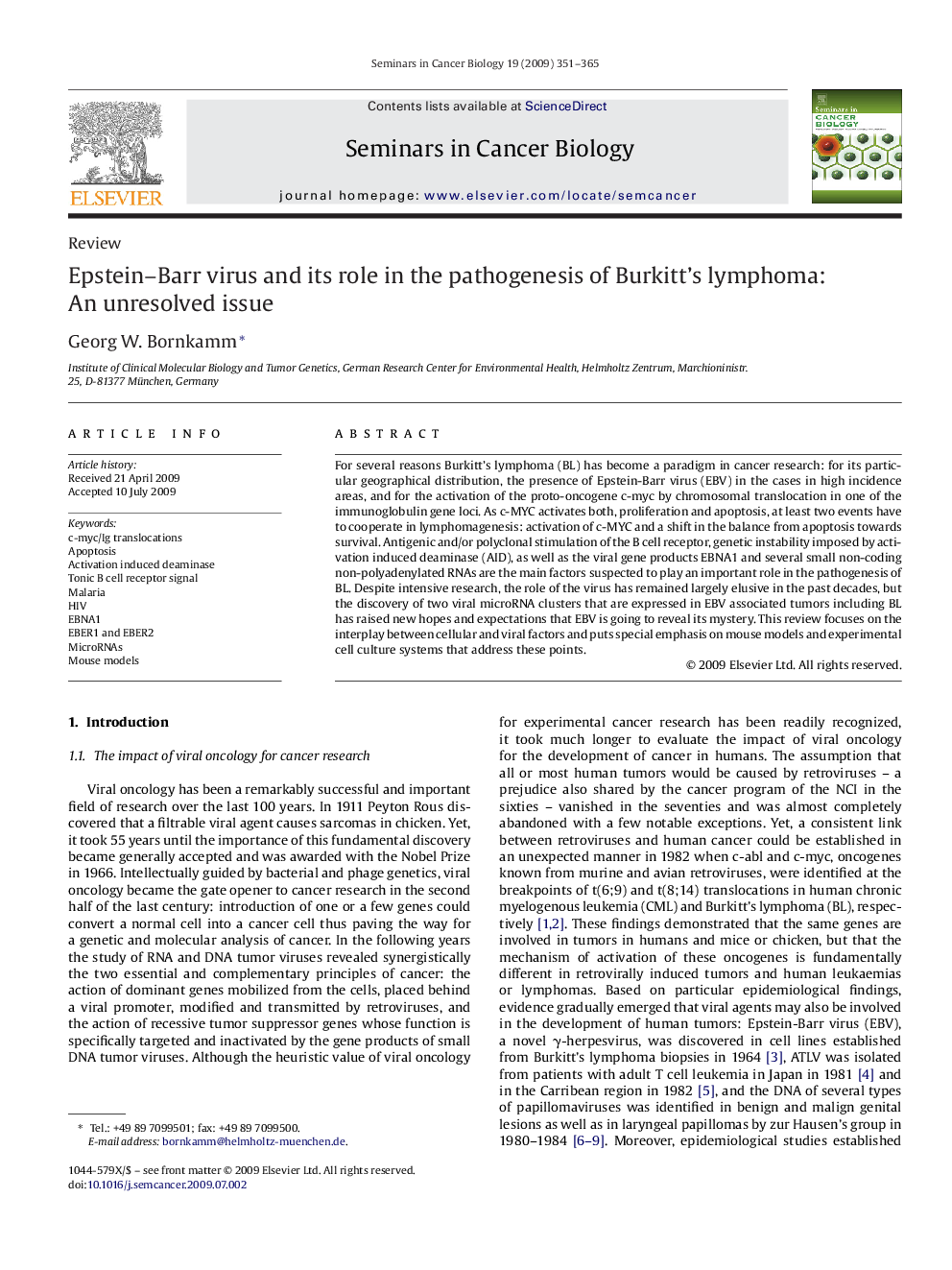| Article ID | Journal | Published Year | Pages | File Type |
|---|---|---|---|---|
| 10845666 | Seminars in Cancer Biology | 2009 | 15 Pages |
Abstract
For several reasons Burkitt's lymphoma (BL) has become a paradigm in cancer research: for its particular geographical distribution, the presence of Epstein-Barr virus (EBV) in the cases in high incidence areas, and for the activation of the proto-oncogene c-myc by chromosomal translocation in one of the immunoglobulin gene loci. As c-MYC activates both, proliferation and apoptosis, at least two events have to cooperate in lymphomagenesis: activation of c-MYC and a shift in the balance from apoptosis towards survival. Antigenic and/or polyclonal stimulation of the B cell receptor, genetic instability imposed by activation induced deaminase (AID), as well as the viral gene products EBNA1 and several small non-coding non-polyadenylated RNAs are the main factors suspected to play an important role in the pathogenesis of BL. Despite intensive research, the role of the virus has remained largely elusive in the past decades, but the discovery of two viral microRNA clusters that are expressed in EBV associated tumors including BL has raised new hopes and expectations that EBV is going to reveal its mystery. This review focuses on the interplay between cellular and viral factors and puts special emphasis on mouse models and experimental cell culture systems that address these points.
Related Topics
Life Sciences
Biochemistry, Genetics and Molecular Biology
Biochemistry
Authors
Georg W. Bornkamm,
